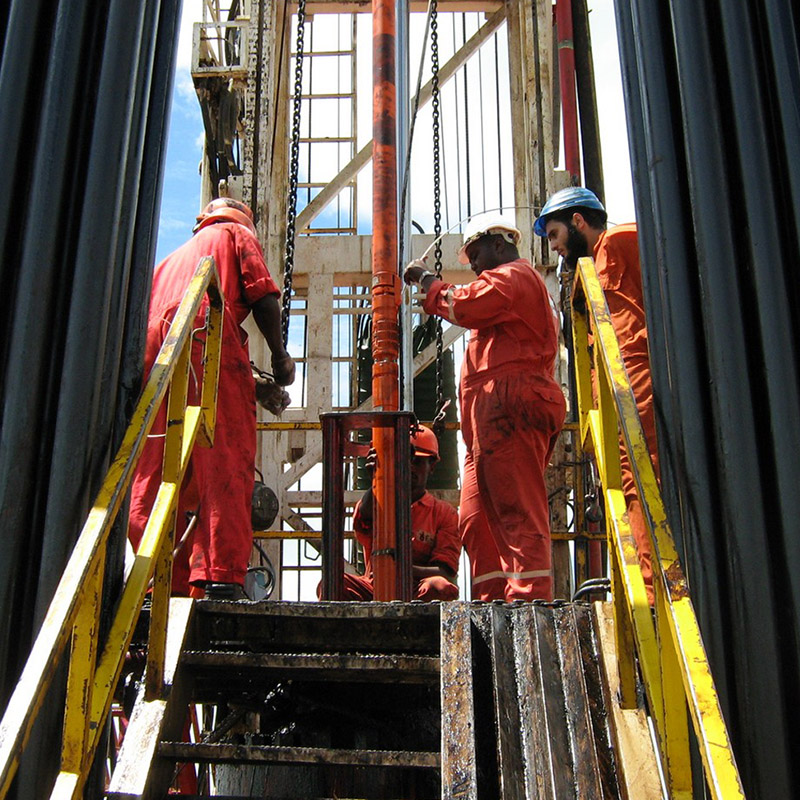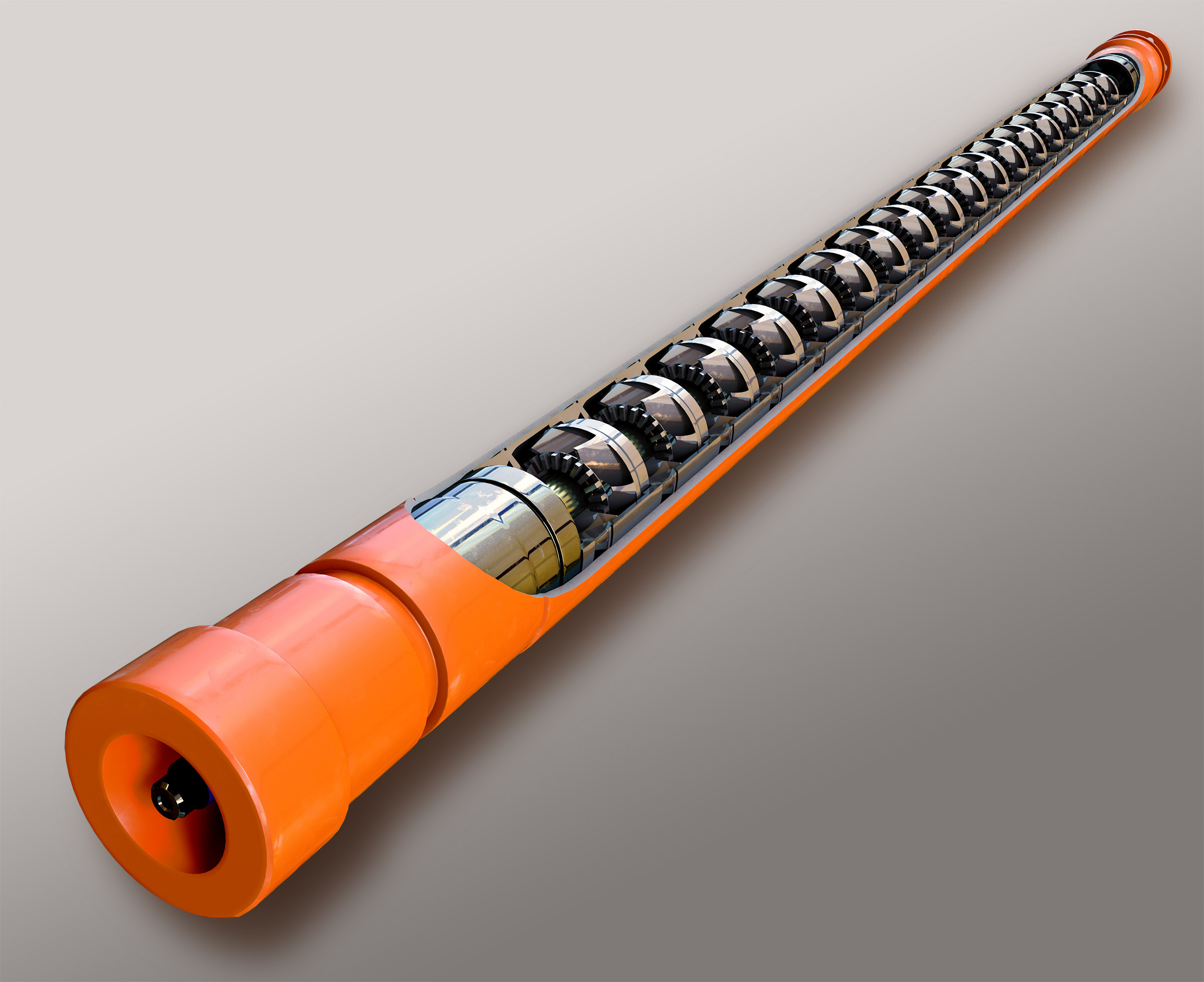UP TO 50%
POWERSAVE High-Efficiency ESP SYSTEMS
Reduce ESP power consumption up to 50%
The PowerSave high-efficiency ESP system combines proprietary pump-stage design, precision parts manufactured using powder metallurgy techniques, and advanced permanent magnet motor (PMM) technology to lower electrical submersible pumping (ESP) system power consumption by 25% or more when compared to the next most efficient competing systems.
It is not unusual to see electricity savings of up to 50% depending on the equipment being replaced. While reducing ESP electrical consumption is an effective way to lower OPEX, it has the added benefit of reducing carbon emissions.
BENEFITS

With PMM motors, superior stage design, and precision powder metallurgy

Efficient design increases lift per foot, simplifies installation, and improves ESP placement

Extends motor life, reduces scaling, offers superior gas handling, and improves reliability
applications
- Conventional and unconventional wells
- Standard and slim casing sizes
capabilities
- Lower energy use
- Reduce ESP length
- Improve performance and reliability
features
- Permanent magnet motors consume less electricity, reduce motor length, and run cooler than yesterday's induction motors
- High-RPM pumps with superior stage design conserve more electricity, offer high-efficiency performance, and reduces pump length
- Powder metallurgy manufacturing produces ultra-smooth components, enables high-precision design, and reduces heat and vibration in ESP components

High-Efficiency ESP Systems Save Electricity and Lower OPEX
ESPs provide reliable artificial lift for a broad range of flow rates and well conditions. When a downhole system runs 24 hours a day, 7 days a week, the electricity bill can be significant. Electricity costs reduce profits, particularly for operators that run hundreds of ESPs or that must make regular trips to refuel onsite generators.
Heat is the Enemy
A full 61% of the power consumed in a conventional ESP system is lost to heat. Only 39% of the power is used to actually produce hydrocarbons. This is consistent across the industry in conventional ESPs running a three-phase, two-pole, oil-filled induction motor driving a multistage centrifugal pump. The pump alone is responsible for losing 29% of all electricity to heat, and the motor loses 13%.
Losing 61% of the electricity you buy to heat is unacceptable. Novomet attacked the two biggest energy wasting components in an ESP—the pump and the motor—to develop the PowerSave high-efficiency system.
Gain Efficiency with Aerospace-Inspired Pump Geometries
We started by designing an energy-efficient, high-speed pump that would operate at higher RPMs. Using powder metallurgy, we manufacture parts with a level of precision that is not possible using industry-standard sand-cast manufacturing. This enabled us to redesign the pump using new geometries, and to reduce the overall pump length to one-third its previous size—while maintaining pump capacity. Advanced pump stage geometries and an upgrade in materials combined with the shorter pump length to dramatically reduce heat and wasted electricity.
Increase Performance with a Reliable Permanent Magnet Motor
The next step was the motor. Typical induction motors use motor windings to create magnetic induction. Having to create this induction causes heat, wasting electromagnetic energy. So we designed and developed a permanent magnet motor that eliminates the need for an induction rotor. The PMM rotor uses rare-earth alloy magnets with two ports where north and south poles interlace to reduce the power needed to turn the rotor. Stator laminations are made from proprietary Novomet material, further improving the magnetic field. As with the pump, PowerSave permanent magnet motors are shorter and lighter than induction motors and generate more horsepower per foot. The result is a lightweight, powerful motor that runs cooler and uses less electricity.
The Most Efficient Electricity is the Electricity You Don't Have to Use
The high-speed pump and permanent magnet motor combine to reduce ESP power consumption by up to 50% compared to old and inefficient ESPs. Compared to supposed high-efficiency ESP systems from big-name service providers, you can expect to use 25–30% less electricty to run a Novomet ESP every month.
Specifications

|
Size (RU) |
Size |
Capacity |
Head |
Efficiency rate |
|
2A |
2.72 in. |
151-755 bbl/d (@60Hz) |
11,483 ft |
45-57% |
|
69 mm |
20-100 m3/d (@50Hz) |
3500 m |
||
|
3 |
3.19 in. |
189-2,415 bbl/d (@60Hz) |
11,483 ft |
40-70% |
|
81 mm |
25-320 m3/d (@50Hz) |
3500 m |
||
|
5 |
3.62 in. |
251-3,019 bbl/d (@60Hz) |
11,483 ft |
46-66% |
|
92 mm |
20-400 m3/d (@50Hz) |
3500 m |
||
|
5A |
4.06 in. |
755-3,774 bbl/d (@60Hz) |
11,483 ft |
67-71% |
|
103 mm |
100-500 m3/d (@50Hz) |
3500 m |
||
|
7A |
5.35 in. |
2264-16,982 bbl/d (@60Hz) |
9,843 ft |
67-76% |
|
136 mm |
300-2250 m3/d (@50Hz) |
3000 m |
||
|
8 |
6.77 in. |
12,076-18,869 bbl/d (@60Hz) |
8,202 ft |
74-76% |
|
172 mm |
1600-2500 m3/d (@50Hz) |
2500 m |
Download Our Featured PowerSave High-Efficiency ESP Case Studies
Download the PowerSave High-Efficiency ESP System Brochure for North America



.jpg)


